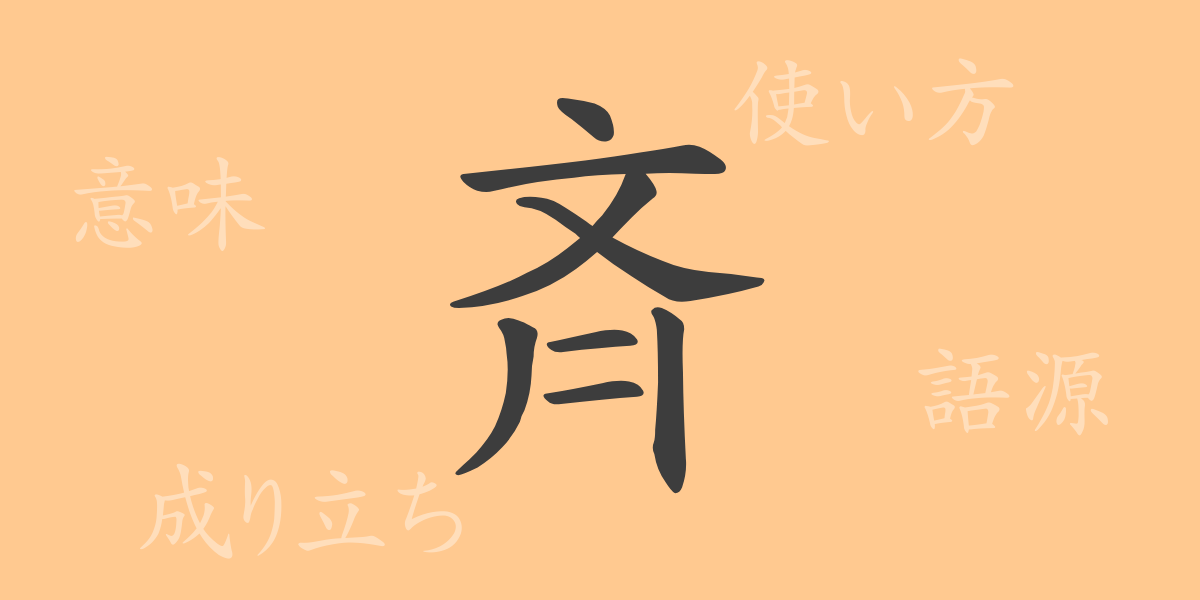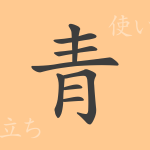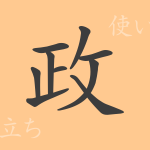Japanese kanji, deeply embedded in the culture, are essential in everyday life. The kanji ‘斉’ (セイ), despite its simple appearance, encompasses a rich history and diverse meanings. This article explores the allure of ‘斉’, from its origins to contemporary usage, including idiomatic expressions and proverbs, revealing the profound world encapsulated in this single character.
Origins of 斉
The kanji ‘斉’ has its roots in ancient China, derived from the name of the state of Qi (セイ) during the Spring and Autumn period. Known for its cultural prosperity, especially in music, the term ‘斉する’ evolved to mean ‘to harmonize’ or ‘to adjust.’ The character combines ‘文’ (indicating culture or civilization) and ‘斗’ (measuring), suggesting meanings related to adjustment or alignment.
Meaning and Usage of 斉
‘斉’ encompasses meanings such as ‘to align,’ ‘to adjust,’ and ‘to be uniform.’ It is used to describe bringing various elements to a uniform standard or state. For example, ‘斉唱’ refers to people singing together in harmony, while ‘一斉に’ describes many people or things acting simultaneously. Understanding the usage of ‘斉’ can be a step toward mastery of Japanese.
Readings, Stroke Count, and Radical of 斉
The kanji ‘斉’ is versatile in its readings and structural composition within the Japanese language.
- Readings: On’yomi are ‘セイ’ (Sei), ‘サイ’ (Sai); Kun’yomi include ‘そろう’ (sorou), ‘ひとしい’ (hitoshii), ‘ひとしく’ (hitoshiku).
- Stroke Count: ‘斉’ comprises 12 strokes.
- Radical: The primary radical is ‘斉’ itself, but elements of ‘文’ and ‘斗’ are also present.
Phrases and Idioms Involving 斉
There are many idioms and phrases that include ‘斉’. For example, ‘一斉射撃’ (いっせいしゃげき) refers to a volley of gunfire happening simultaneously. ‘齊齊哈爾’ (チチハル, Qiqihar) is a place name in China that has been adopted into Japanese. ‘一斉に立ち上がる’ (いっせいにたちあがる) describes a group of people standing up at the same time, illustrating the rhythm of the Japanese language.
Conclusion on 斉
Through this article, we have explored the historical background and the versatile applications of the kanji ‘斉’ in modern Japanese. Even a seemingly simple character like ‘斉’ has deep meanings and cultural significance. Understanding and effectively using kanji like ‘斉’ not only enhances accurate communication but also enriches one’s expressive capabilities. For learners and native speakers alike, exploring the kanji ‘斉’ is an engaging step in the journey through the treasures of knowledge in the Japanese language.

























